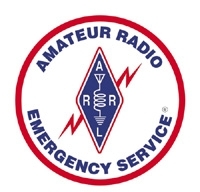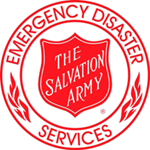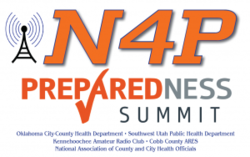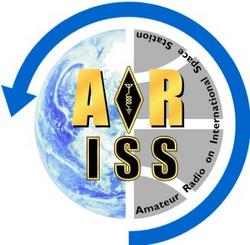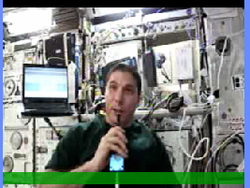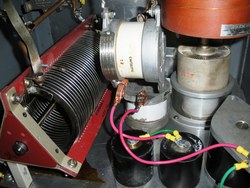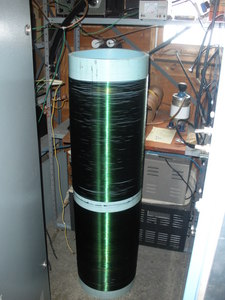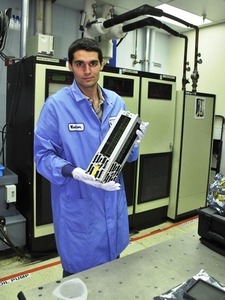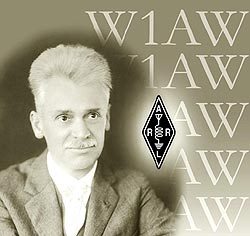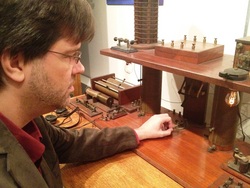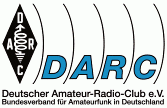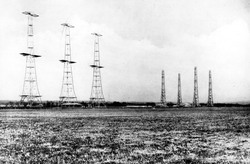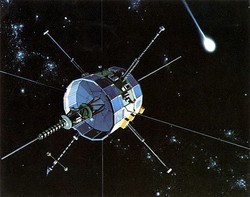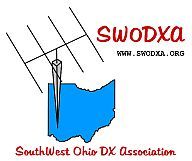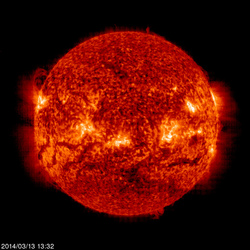 March 13, 2014 John E. Ross, KD8IDJ, Editor
| ||||||||||||||||||||||
Regulatory: FCC Cites Ham's "History of Compliance" in Reducing Fine for Unlicensed Broadcasting The FCC has cited the otherwise clean record of an Amateur Radio licensee in deciding to reduce his fine for "willfully and repeatedly" violating the Communications Act and FCC rules. Brian R. Ragan, KF6EGI, of Suisun City, California, was found liable for operating an unlicensed FM broadcasting station for 6 months and for failing to allow FCC personnel to inspect his station. In a Forfeiture Order released March 10, the FCC fined Ragan $13,600 -- a $3400 reduction of the $17,000 the Commission initially proposed to levy in the case, which dates back to 2012. In deciding to reduce Ragan's fine, the FCC said it took into account Ragan's "history of compliance as an Amateur licensee."
"Prior to this violation, Mr Ragan had no violations of the [Communications] Act or the [FCC] rules as an Amateur Radio operator," the FCC said in the Forfeiture Order, "and, therefore, consistent with the [forfeiture] adjustment factors, we find that reduction of the forfeiture based on Mr Ragan's history of compliance is warranted and reduce the forfeiture by $3400." As precedent the Commission cited the case of Amateur Extra class licensee Joaquim Barbosa, N2KBJ, of Elizabeth, New Jersey. In a July 2012 Notice of Apparent Liability (NAL), the FCC found Barbosa liable for operating an unlicensed transmitter that interfered with a government communication system, and for not allowing an FCC inspection. The FCC reduced its initial $20,000 levy to $16,000, citing Barbosa's "overall history of compliance with the laws, including the Commission's rules." As required by the NAL, Ragan submitted a statement that he is now in full compliance with the Communications Act and no longer engaged in unauthorized operation on 104.9 MHz. Ragan also said he is willing to allow FCC personnel to inspect for verification. Read more. Regulatory: FCC Cites New Jersey CB Shop for Marketing Unauthorized RF Devices The FCC has issued a Citation to a New Jersey Citizens Band radio shop for marketing unauthorized RF devices to consumers in violation of the Communications Act of 1934 and FCC Part 2 rules. The Citation to Thomas Wilson, doing business as Redman CB Stop, in Absecon, New Jersey, was issued March 5. "Redman CB Stop should take immediate steps to discontinue the marketing of unauthorized radio frequency devices, and to avoid any recurrence of the misconduct described herein," the FCC Citation directed.
Last October an agent from the FCC Enforcement Bureau's Philadelphia office browsed the website of the online retailer of CB and Amateur Radio gear. The agent "observed for sale 16 makes and models of non-certified RF power amplifiers" capable of operation on both the 11 meter Citizens Band and the 10 meter ham band. The FCC said such devices may not be offered for sale prior to FCC certification. In addition, FCC rules prohibit marketing or selling external RF amplifiers capable of amplification between 26 MHz and 28 MHz. The FCC gave Redman CB Stop 30 days to respond to the Citation. The Commission said it will use "all relevant material information before it," including information the retailer may disclose, to determine what, if any, enforcement action may be necessary "to ensure your compliance with the Communications Act and the Commission's rules." Public Service: Amateur Radio Played Role in Missing Airliner Response Following the mysterious disappearance on March 8 of the Malaysian Airline Boeing 777-200ER jetliner with 239 passengers aboard, the airline's Emergency Management Centre (EMC) at Kuala Lumpur Airport provided hotel accommodations for passengers' next of kin. Malaysian Amateur Radio Transmitters' Society (MARTS) President Mohd Aris Bernawi, 9M2IR, said his organization was asked to provide a link between the airport and the hotel.
MARTS quickly set up a station, led by Zanirul Akhmal Zanirun, 9M2PRO, with Azizi Samsuri, 9W2ZZE, as the airline's team leader. The Negeri Sembilan Amateur Radio Club (NESRAC) provided volunteers for the station at the EMC. MARTS set up a cross-band VHF/UHF link to avoid any unnecessary interference to and from public service communications, and later added an HF link. During the callout, 11 Amateur Radio volunteers were at the EMC, and 23 volunteers were at the hotel. 9M2IR, who oversaw the entire process, said MARTS -- an IARU member-society -- was pleased to be able provide the communication link as the search for flight MH370 continues. -- Thanks to Jim Linton, VK3PC, Chairman IARU Region 3 Disaster Communications Committee Public Service: ARES Group Joins Forces with Delaware State Police The Delaware State Police are teaming up with the Sussex County (Delaware) Amateur Radio Emergency Service to ensure reliable back-up communication, should primary law enforcement communication systems fail.
"Delaware must always be aware of the threats of hurricanes, nor'easters, severe snow, and other disasters," Delaware State Police Sussex County Operations Officer Maj Robert Hawkins said in a Cape Gazette article. "Thankfully, we don't get hit often, but when we do, communication is absolutely essential, and having Amateur Radio operators available to fill in gaps will be a real asset." When back-up communication is needed, the Delaware State Police will designate locations for ARES stations to set up. ARES members then will handle any necessary traffic within this network. The initial program will be limited to Sussex County, but it may be expanded to include Delaware's other two counties -- Kent and New Castle. Sussex County covers approximately the lower half of Delaware. Bill Duveneck, KB3KYH, is the Sussex County ARES Emergency Coordinator. -- Cape Gazette via John Bigley, N7UR, Nevada Amateur Radio Newswire Public Service: New SATERN Emergency Disaster Services Ham Station Can Be Remotely Controlled WB5ALM, the new Salvation Army Team Emergency Radio Network (SATERN) ham station for the Alabama-Louisiana-Mississippi (ALM) Division of the organization's Emergency Disaster Services (EDS) Center is capable of being controlled remotely via the Internet. "The goal is to allow for a select group of qualified, trained net control operators to operate a state-of-the art SATERN station that is centrally located within the ALM Division and the Southern Territory from their home location anywhere in the Territory," said Territorial SATERN Net Manager Ken Standard, AD5XJ.
SATERN volunteers inaugurated WB5ALM by checking into the International SATERN Net on March 5. The new call sign, which reflects the initials of Salvation Army founder William Booth as well as its ALM organizational division, will be used for the fixed station at the Division EDS Center and for mobile operation from the SATERN Coordinator's vehicle or the Territorial Communications Trailer. Acquisition of the vanity call sign culminated a nearly year-long process of building the Alabama-Louisiana-Mississippi Division's new SATERN station. "This new station will make it easier to recruit SATERN operators to operate the station during a disaster or emergency by reducing the need for them to be physically present at the EDS Center," said Territorial SATERN Coordinator Bill Feist, WB8BZH. The SATERN Net operates on 14.265 MHz on HF. SATERN volunteers use Amateur Radio to coordinate the organization's emergency response and relief operations and to convey health-and-welfare messages following a disaster. Its director is Rick Shirran, VE3NUZ. -- Thanks to The Salvation Army/SATERN, John Bigley, N7UR Public Service: 2014 Preparedness Summit to Highlight Importance of Amateur Radio The annual Preparedness Summit, the largest public health preparedness conference in the US, will take place April 1-4 in Atlanta, with some 2000 preparedness professionals expected to attend the multidisciplinary event. This year, the Preparedness Summit is highlighting the importance of Amateur Radio, and special event station N4P will operate from the Exhibit Hall. N4P will be on the air from 1700 until 2330 UTC on Wednesday, April 2, and from 1500 until 2030 UTC on Thursday, April 3. Stations contacting N4P will receive a special QSL card.
On VHF and UHF, N4P will monitor the 146.88 W4BTI repeater, the 442.875 MHz K4RFL repeater, and the D-STAR 440.6875 B-Node operating as KK4OIO. On HF SSB, look for N4P on 28.365 MHz, 21.365 MHz, 14.265 MHz, and 7.265 MHz. N4P also will be on EchoLink. The National Association for County & City Health Officials (NACCHO) offered Amateur Radio licensing webinars in February and March in advance of the gathering. Testing will be administered April 3 at the Preparedness Summit. NACCHO is offering an in-person review session at the Summit on April 2. The webinars have been recorded and are available via the Summit website. Ham Radio in Space: "Ham Video" Transmits Live Images of Astronaut Mike Hopkins, KF5LJG, From the ISS
As one of his final actions during his duty tour aboard the International Space Station, NASA Astronaut Mike Hopkins, KF5LJG, installed and commissioned the Amateur Radio on the International Space Station (ARISS) "Ham Video" system over the March 8-9 weekend. Hopkins returned safely to Earth March 10 aboard a Soyuz lander with crew members, Russian cosmonauts Oleg Kotov and Sergey Ryazansky. The Amateur Radio digital television (DATV) setup can transmit video of the crew and the interior of the Columbus module on the 2.4 GHz band (S-band). The ARISS project, led by ARISS-EU, AMSAT-Italy, and the European Space Agency (ESA), eventually will enhance ARISS school contacts by providing a video and audio downlink plus an audio-only uplink. Operating under the call sign OR4ISS, the S-band transmitter can utilize one of two ARISS patch antennas installed on Columbus. Radiated RF power is on the order of 10 W EIRP. The received DATV signal was streamed via the web to a global audience via the British Amateur Television Club (BATC) server. "Congratulations to the Ham TV team on today's outstanding commissioning success!" said ARISS International Chair Frank Bauer, KA3HDO, who works for NASA. "Several stations in Italy were able to receive [the] video and audio downlink." He explained that while the video camera and transmitter aboard the ISS are referred to as "Ham Video," the entire digital TV/audio downlink and FM voice uplink system is being called "Ham TV."
The commissioning process primarily involved making sure that ground stations in Europe would be able to copy the DTV downlink signal, and the results exceeded expectations. A large, high-gain dish at the Matera, Italy, ground station worked in concert with smaller-dish stations that are planned as future Ham TV ground relay stations. ARISS had several additional ground stations around the world tuned in and providing reception reports of the so-called "blank transmission" mode, with the transmitter on and the camera turned off. Those blank transmissions will continue until the next commissioning step set for April 12, and ARISS invites reports. Commissioning of the Ham TV system marks the culmination of more than a decade of planning and preparation within ARISS. Although there are no immediate plans to employ the Ham TV system for educational contacts with schools in North America, Bauer said several US radio amateurs are testing this capability, as are stations in other parts of the world. "If this shows educational value," Bauer said, "it will be employed in the US." Read more. -- Thanks to ARISS International President Frank Bauer, KA3HDO, AMSAT News Service, and ARISS-EU Chairman Gaston Bertels, ON4WF Technology: Hams' Experimental VLF Signals Heard in the UK, Europe In what's believed to be a "first," a very low frequency (VLF) signal from a ham radio experimenter in New York was heard across the Atlantic. Bob Raide, W2ZM, was transmitting on 29.499 kHz under a Part 5 Experimental license, WH2XBA/1. His very slow-speed (QRSS) CW signal was initially detected in the UK just before 0000 UTC on March 3 by Paul Nicholson, an SWL, and later by Mike Dennison, G3XDV, and Markus Vester, DK6NM, in Germany. Nicholson also copied a 29.501 kHz transmission from Dex McIntyre, W4DEX, in North Carolina, operating as WH2XBA/4.
"In recent weeks a number of amateur tests have been running from the USA to Europe around 74 kHz and at 29.499 kHz using several hundred watts to large antennas," blogged Roger Lapthorn, G3XBM. He said that signals on 74 kHz were "well copied," but that "the surprise" was detecting the 29.499 kHz signal. "As far as I know, these 29.499 kHz VLF signals are the first amateur VLF [transmissions] to span the Atlantic -- fantastic results by well-equipped stations using suitable receivers and good software." Warren Ziegler, K2ORS, who is on the Experimental license as WH2XBA/2, told ARRL that he and several other radio amateurs have obtained Part 5 licenses to experiment on 500 kHz and on 137 kHz. Ziegler, who has been a participant in the ARRL-sponsored experimental operations on 500 kHz as WD2XSH/23, said Raide wanted to be the first to span the Atlantic on VLF, which he defined as between 3 kHz and 30 kHz, so Ziegler applied for and received the WH2XBA Experimental grant, and included Raide and four others on the license.
"I was ready," Raide told ARRL. His transmitter has a 3CX3000A7 tube in the final, running grounded grid and generating 800 W. The effective isotropic radiated power (EIRP), however, was estimated to be approximately 1 mW. To operate on 10,000 meters, Raide has a 90 foot vertical antenna using a reconfigured Zepp, fed via a huge loading coil that is 4 feet tall, more than 1 foot across and comprised of some 2000 feet of #14 wire. He employs a few thousand feet of "chicken wire" for his radial system. The transmission consisted of "XBA" sent at a rate of 120 seconds (2 minutes) per dot and 360 seconds (6 minutes) per dash of CW. In the UK Nicholson copied the signal on software using a PC sound card with a preamplifier ahead of it. His antenna is a pair of orthogonal loops, each 20 meters square, at ground level, transformer coupled to the preamplifier. Read more. -- Thanks to Warren Ziegler, K2ORS, Bob Raide, W2ZM, and Joe Craig, VO1NA Technology: KickSat CubeSat to Deploy Smallest Earth-Orbiting Satellites
When the third SpaceX ISS resupply mission launches on March 16 from Cape Canaveral, it will carry the 3U KickSat CubeSat into orbit. NASA TV is scheduled to broadcast the launch live. If all goes according to plan, KickSat, in turn, will release 200 "Sprite" satellites -- each about the size of a small cracker -- into Earth orbit. Zac Manchester, KD2BHC -- a Cornell University PhD student in aerospace engineering -- is heading up the project, which was funded via Kickstarter. The tiny Sprite spacecraft will be single-function, short-lifespan units operating on 437 MHz. Each is essentially a double-sided printed circuit board measuring 3.5 cm × 3.5 cm, incorporating a microcontroller or two, radio, and solar cells. Each can carry single-chip sensors, such as thermometers, magnetometers, gyroscopes, and accelerometers. All Sprites operate on the same frequency -- 437.240 MHz -- and use Code Division Multiple Access (CDMA). Transmitters run 10 mW output.
When KickSat reaches its appropriate attitude and orbit, a command signal from the ground will trigger deployment, and the Sprites will be released as free-flying spacecraft. The Cornell ground station in Ithaca, New York, will monitor telemetry and sensor measurements from the individual Sprites, with assistance from several other Amateur Radio ground stations around the world. Due to their low orbit, the Sprites can remain in orbit for as long as 6 weeks in a best-case scenario, depending on atmospheric conditions. KickSat is being planned as a technology demonstration mission for the Sprite spacecraft. It's being launched through NASA's Educational Launch of Nanosatellite (ELaNa) program. Read more. Centennial: W1AW Centennial Operations Shift to Tennessee, New Mexico, and Guam on March 19 The ARRL Centennial "W1AW WAS" operations that are taking place throughout 2014 from each of the 50 states will relocate at 0000 UTC on March 19 (the evening of March 18 in US time zones), from Arizona and Ohio to Tennessee (W1AW/4), New Mexico (W1AW/5), and Guam (W1AW/KH2). During 2014 W1AW will be on the air from every state (at least twice) and most US territories, and it will be easy to work all states solely by contacting W1AW portable operations.
In conjunction with the 100th anniversary of the ARRL, the ARRL Centennial QSO Party kicked off January 1 for a year-long operating event in which participants can accumulate points and win awards. The event is open to all, although only ARRL members and appointees, elected officials, HQ staff and W1AW are worth ARRL Centennial QSO Party points. Working W1AW/x from each state is worth 5 points per contact. To earn the "Worked all States with W1AW Award," work W1AW operating portable from all 50 states. (Working W1AW or W100AW in Connecticut does not count for Connecticut, however. For award credit, participants must work W1AW/1 in Connecticut.) A W1AW WAS certificate and plaque will be available (pricing not yet available). The ARRL has posted an ARRL Centennial QSO Party leader board that participants can use to determine how many points they have accumulated in the Centennial QSO Party and in the W1AW WAS operations. Log in using your Logbook of The World (LoTW) user name and password, and your position will appear at the top of the leader boards. Results are updated daily, based on contacts entered into LoTW. Media: NPR's "All Things Considered" Segment Includes Spark Gap Morse from ARRL As part of its series of vignettes exploring a "counterfactual" history, "What if World War I had never happened?" NPR afternoon news magazine "All Things Considered" aired a segment on March 11 to explore how history would have unfurled, if the assassination of Archduke Franz Ferdinand had not been not successful. "They needed a sound of a telegraph relaying the message of the failed assassination attempt," said ARRL Media and Public Relations Manager Sean Kutzko, KX9X. "They wanted it to be as authentic as possible, so we explained that in 1914, it would have been relayed via spark."
The ARRL Lab has a working spark transmitter, so Kutzko got the desired text from NPR, which he sent by hand and recorded. "They said it was 'perfect,'" he reported. "It was a real thrill being able to help NPR; I used to work at NPR affiliates in Illinois and Indiana in the 1990s, so being able to help the network was exciting." The final result? Well, if you wanted to hear the spark Morse code on the air, you had to listen closely and quickly; it was soon voiced over by a faux voice dispatch relating the faux news. NPR's "All Things Considered" segments are available on the NPR website. International: Number of Newcomers Rises, Overall Numbers Fall in Germany The Deutscher Amateur Radio Club (DARC) reports that the number of newcomers obtaining ham tickets in Germany rose by 14 percent in 2013, with 829 receiving licenses, compared with 724 in 2012. The DARC said 909 applicants took license exams in 2013, up from 804 a year earlier -- a 13 percent jump.
"The number of examination participants was at its highest point since 2007," the DARC said. On the other hand, there were 2255 fewer German Amateur Radio licenses on record at the end of 2013 -- a 3.2 percent drop from 2012. The DARC cited statistics provided by the Bundesnetzagentur, Germany's telecommunications regulator. As of December 31, 2013, 68,191 Amateur Radio licenses were on record, down from 70,446 at the end of 2012, 71,659 at the end of 2011 and 72,293 at the end of 2011. The DARC said the rise in DN-prefix training call sign assignments continued in 2013, with 2711 issued, 183 more than in 2012. The statistic, the DARC continued, reflects the success of trainers' efforts, with more than 27 percent more youth involved in training programs than in 2010 -- a trend the DARC called "encouraging." German DN call signs are held by Amateur Radio trainers for use by newcomers, who operate under a trainer's direct control. International: Industry Canada Rolls Out Updated Ham Radio Question Pool, New Exam Generator Radio Amateurs of Canada (RAC) reports that telecommunications regulator Industry Canada (IC) has released a new Amateur Radio examination question bank -- or pool -- based on recommendations from RAC. IC also launched a new exam generator. "This is good news that we were eagerly anticipating," RAC President Geoff Bawden, VE4BAW, said. "We were pleased to work with IC on this issue of significant importance to Amateur Radio operators."
RAC entered into a contract with IC in January 2013 to update the question pool in English and in French -- Canada's official languages. The review team examined more than 3000 questions and 12,000 possible answers for the Basic and Advanced examinations in English and French "and aimed for perfection in every one," the organization said. "Technical and linguistic accuracy were equally important in the review." RAC said changes included correcting factual errors, replacing obsolete language and examples, making questions and answers clearer, and ensuring that questions addressed current Amateur Radio practices and regulations. Comments elicited from radio amateurs in Canada helped the team identify where changes were needed. RAC wrapped up its work a year ago. Following the release of the new examination question banks, RAC received reports of typographical or transcription errors in the exam questions. "Fortunately the new system IC has developed makes it easy and quick to correct such errors," said Vincent Charron, VA3GX/VE2HHH, RAC's Director of Communications and Fundraising. "RAC will assist in conveying the information. Anyone wishing to report errors is invited to send these reports by e-mail." -- RAC Education: Foundation for Amateur Radio Invites Scholarship Applications
The Foundation for Amateur Radio (FAR) is accepting applications from Amateur Radio operators for scholarships for the 2014-2015 school year. The application deadline is April 15. Some scholarships give preference to radio amateurs from California, Delaware, Florida, Maryland, Ohio, Pennsylvania, Texas, Virginia, and Wisconsin. FAR, a non-profit, all-volunteer organization, manages 52 scholarships worth a total of $72,100. There are no age restrictions for any of the scholarships, and applicants do not have to attend a four-year institution. All applicants must be full-time students. Availability of these scholarship awards may offer an incentive to students considering getting a license or already studying for the test to take action before April 15. FAR's scholarship program is one of the largest for Amateur Radio licensees in the US. FAR's purpose is to further Amateur Radio in all of its various facets. FAR sponsors training, seminars, and other events in support of Amateur Radio. -- Dave Prestel, W8AJR, Chairman FAR Scholarship Committee Feature: A Century of Amateur Radio and the ARRL As the US edged ever closer to entering World War II, more restrictions were placed on hams. They were still allowed to operate, but only to make contacts within the country -- no DX! There was strong evidence of subversive activities and clandestine radio stations in America. The FCC ordered all radio licensees, both commercial operators and hams, to furnish a full set of fingerprints, a passport-type photo, and proof of US citizenship by October 15, 1940. It was necessary for the FCC to ramp up its monitoring activities, and the September 1940 issue of QST put out a call for amateurs to fill 500 new positions as FCC monitoring operators. Those 500 positions were quickly filled, almost entirely by hams. FCC's well-known Radio Intelligence Division was thus supervised and staffed mainly by hams, under the direction of George Sterling, W3DF. The Navy Communications Reserve and the Army stepped up their recruitment of amateurs to enlist as radio operators and repairmen, and hams again responded in great numbers. In addition, the Civilian Conservation Corps and the National Youth Administration recruited hams to serve as radio instructors. During this period, ARRL inaugurated its code proficiency program, with more than 900 hams submitting W1AW copy of the first certificate run.
Our nation was still in the phase of "positive neutrality," but there were many efforts in which US hams helped the war effort before we entered the fray. One of those efforts was the Civilian Technical Corps, which maintained and operated British radars, then operating in the upper HF and lower VHF range. One of those early radars was quite important -- Britain's Chain Home radar system, an early warning system to detect incoming German bombers early enough to scramble fighters to meet the enemy at altitude over the English Channel. Chain Home operated at 22 to 25 MHz. Although that frequency range presented problems, it could be built and put into service quickly, using existing technology and equipment. Sets of three or four 360-foot towers were built at various locations on the English Channel's coast to support the very large wire antenna arrays. Some of those towers still exist, now supporting commercial antennas. Next week: I'll tell the tale of a war effort that I became very familiar with by working with some of the hams who developed and put the Proximity Fuze into action. -- Thanks to Al Brogdon, W1AB In Brief
Hams Detect Signal from Retired NASA Deep-Space Probe: Radio amateurs from AMSAT-DL (Germany) and Bochum Observatory detected the beacon signal of the retired NASA International Cometary Explorer (ICE) deep space probe on March 1 and 2. After some changes to the ground equipment and aligning the receiving antenna to the predicted position in the sky, the beacon signal could positively be identified due to its frequency, the position in the sky, and the frequency shift due to Doppler shift. They used a 20 meter radio telescope. Launched in 1978 as the International Sun-Earth Explorer 3 (ISEE-3), ICE was the first spacecraft to detect the "solar wind" approaching Earth. In 1982, the spacecraft was renamed the International Cometary Explorer and diverted to the Moon, where its gravitational pull placed ICE into a heliocentric orbit. Support for the ICE mission was terminated in 1997, although the spacecraft transmitter was left on. It was last detected by NASA's Deep Space Network in 2008. -- Thanks to AMSAT-DL HRD Software Acquires Rights to SAM Callbook CD, Database: HRD Software LLC has acquired the rights to the SAM Callbook CD and database, begun in the early 1990s by RT Systems before begin purchased by VIS. HRD has said it will honor the current subscriber base and continue to ship the monthly CDs. It will also develop a Windows interface for the Callbook and plans to incorporate the Callbook data into the Ham Radio Deluxe logbook. HRD also has announced its release of the preview/beta 2.1 version of Ham Radio Deluxe 6.2.
DX Dinner Announces Featured Speaker: David Collingham, K3LP, will be the featured speaker for their 29th annual DX Dinner®, sponsored by the SouthWest Ohio DX Association (SWODXA). The dinner, held in conjunction with the 2014 Dayton Hamvention®, is Friday, May 16, at the Marriott Hotel in Dayton. Collingham has been on more than 65 DXpeditions, operating from 51 different DXCC entities. His topic is "The Humanitarian Side of DXing and DXpeditions." Building a Super Station 30th Anniversary Edition Now Available: The 30th anniversary edition of Building a Super Station by David Robbins, K1TTT, is available free for download. ARRL DXAC Committee Report Available: The ARRL has posted the DX Advisory Committee (DXAC) report submitted at the January 2014 ARRL Board of Directors meeting. The K7RA Solar Update This week saw sunspot numbers and solar flux decline. Average daily sunspot numbers dropped from 199.3 to 138.7, while solar flux dipped from 162.9 to 149.7.
Sharp-eyed readers may notice that I reported average daily sunspot numbers last week at 202.4, but I spotted a discrepancy between what I reported last week for March 4 and 5 and what we see from NOAA. I'm not sure if NOAA revised the sunspot numbers for those days, or I just erred, but sunspot numbers on those dates actually were 160 and 191, thus changing the average sunspot number for that week. The most recent prediction has solar flux at 145 on March 13, 140 on March 14-15, then 135 and 155 on March 16-17, 140 on March 18-19, 135 on March 20-22, then 145, 150 and 145 on March 23-25, 140 on March 26-27, and 135 on March 28-29. After that, we see a short-term low of 110 on April 5-7, and then rising to 140 on April 20. Predicted planetary A index is 5 on March 13-16, 8 on March 17-18, 5 on March 19-29, 8 on March 30 through April 1, 5 on April 2-5, and then 12, 10 and 8 on April 6-8, then back to 5. The spring equinox is next week! The first day of spring is Thursday, March 20, at 1657 UTC -- an optimum time for HF propagation. This weekly "Solar Update" in The ARRL Letter is just a preview of the Propagation Bulletin issued every Friday. The latest bulletin and an archive of past propagation bulletins is on the ARRL website. In tomorrow's Propagation Bulletin look for an updated forecast and reports from readers. Send me your reports and observations. Just Ahead in Radiosport
Visit the Contest Corral for details. Upcoming ARRL Section, State and Division Conventions and Events
Find conventions and hamfests in your area.
ARRL -- Your One-Stop Resource for Amateur Radio News and Information Join or Renew Today! ARRL membership includes QST, Amateur Radio's most popular and informative journal, delivered to your mailbox each month. Listen to ARRL Audio News, available every Friday. Subscribe to... NCJ -- National Contest Journal. Published bi-monthly, features articles by top contesters, letters, hints, statistics, scores, NA Sprint and QSO Parties. QEX -- A Forum for Communications Experimenters. Published bi-monthly, features technical articles, construction projects, columns and other items of interest to radio amateurs and communications professionals. Free of charge to ARRL members: Subscribe to the ARES E-Letter (monthly public service and emergency communications news), the ARRL Contest Update (bi-weekly contest newsletter), Division and Section news alerts -- and much more! Find us on Facebook. Follow us on Twitter.
| ||||||||||||||||||||||

.jpg)

